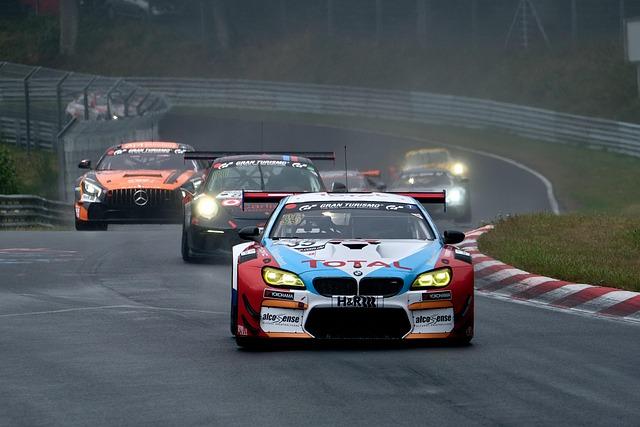Race walking, a discipline often overshadowed by its flashier athletic counterparts, presents a unique challenge not only for its competitors but also for the judges who oversee the sport. Unlike conventional foot races, the event demands athletes maintain continuous contact with the ground and a straightened leading leg-criteria that are notoriously difficult to assess in real time. As race walking gains visibility on the global stage, understanding why its judging remains a contentious and complex issue becomes increasingly important. This article delves into the intricacies of race walking adjudication, exploring the technical nuances, human limitations, and evolving technologies that make judging one of the sport’s most formidable hurdles.
Challenges in Maintaining Objective Standards in Race Walking
Race walking’s defining rules-keeping one foot in contact with the ground at all times and ensuring the advancing leg is straightened-are deceptively difficult to enforce with precision. Judges rely heavily on the naked eye, often from considerable distances and under varying lighting conditions, to detect infractions that can last fractions of a second. This subjectivity introduces a high variability in officiating, where what one judge sees as a legal stride, another may perceive as a violation. The rapid pace, combined with athletes’ adaptive techniques designed to skirt the line of legality, compounds these challenges, making consistent and objective judgment elusive.
Technological aids like slow-motion cameras and sensors have been proposed to improve accuracy but face resistance rooted in tradition, cost, and practicality during competitions. Notably, the balance between athlete fairness and maintaining the sport’s fluidity remains delicate. Below is a summary of primary factors complicating objective evaluation:
- Visual Limitations: Human reaction times and spatial perspective errors
- Rule Ambiguity: Vague definitions-“loss of contact” often imperceptible
- Environmental Factors: Lighting, weather, and track conditions affect visibility
- Technological Constraints: Lack of real-time, universally accepted tools
- Judge Subjectivity: Varying interpretations influenced by experience and bias
| Judging Challenge | Impact on Race Outcome | Potential Solution |
|---|---|---|
| Inconsistent Penalties | Disputes and athlete frustration | Standardized training for judges |
| Delayed Decisions | Race interruptions and uncertain standings | Instant replay integration |
| Technological Resistance | Limited modernization of rules | Gradual policy adaptation |
The Impact of Technique Variability on Judging Accuracy
Race walking’s unique appeal lies in the subtlety of its technique, where athletes must maintain contact with the ground and keep their leading leg straight. However, this seemingly straightforward rule is where subjectivity creeps into judging. Walkers display a wide range of individual styles, shaped by their physiology and training, making it challenging for judges to uniformly interpret infractions. The slightest lift or bent knee, often invisible to the naked eye, can determine disqualification, turning the sport into a contest not only of endurance but of perceptual precision.
Adding complexity, the dynamic variations in technique throughout a race further cloud verdicts. Fatigue causes form breakdowns, while athletes may intentionally adjust their gait to push speed limits without breaking the rules. Judges rely on split-second assessments, balancing the need for fairness with the variability of human movement. Below is a simplified comparison of common technical deviations and potential judging difficulties:
| Technique Variation | Description | Judging Challenge |
|---|---|---|
| Loss of Ground Contact | Brief airborne phase between steps | Hard to detect without video |
| Bent Leading Knee | Failure to straighten leg upon contact | Subtle angle differences confuse calls |
| Hip Rotation Frequency | High rotation to increase stride length | Can mimic rule violations in rapid motion |
- Subjective differences among judges lead to inconsistent penalties.
- Technological aids such as slow-motion replays, though helpful, are not universally implemented.
- Training and experience greatly influence a judge’s ability to discern technique faults accurately.
Enhancing Fairness Through Technology and Updated Training Protocols
In attempts to improve the objectivity of race walking adjudication, officials are increasingly turning to technological innovations. Advanced motion sensors and high-speed video analysis provide precise data on an athlete’s gait and foot contact with the ground, reducing the reliance on subjective human judgment. Such tools enable real-time monitoring that can flag potential infractions with greater accuracy than the naked eye, offering a promise of fairer outcomes in competitions historically marred by controversy.
Alongside these tools, updated training programs for judges emphasize consistency and transparency. Officials undergo rigorous simulations and are educated about the nuances revealed through technology, fostering a more uniform interpretation of race walking rules. Key elements of these new protocols include:
- Regular calibration sessions using video case studies
- Collaborative workshops where judges compare calls and resolve discrepancies
- Integration of biometric feedback into decision-making frameworks
- Periodic evaluation to ensure adherence to evolving guidelines
| Technology | Function | Impact |
|---|---|---|
| Motion Sensors | Detect foot-ground contact time | Higher accuracy in detecting illegal steps |
| High-Speed Cameras | Analyze gait mechanics frame-by-frame | Enhanced review capability post-race |
| Biometric Tracking | Monitor athlete movement patterns | Improved judge training and rule clarity |
Closing Remarks
As race walking continues to evolve on the global stage, the challenges of fair and consistent judging remain at the sport’s core. Striking a balance between subjective enforcement and objective standards is no easy feat, leaving officials under constant scrutiny. For athletes and spectators alike, understanding these nuances is key to appreciating the discipline’s unique demands. Ultimately, the intricate art of judging race walking underscores the broader complexities of officiating in any sport where precision and interpretation collide.

